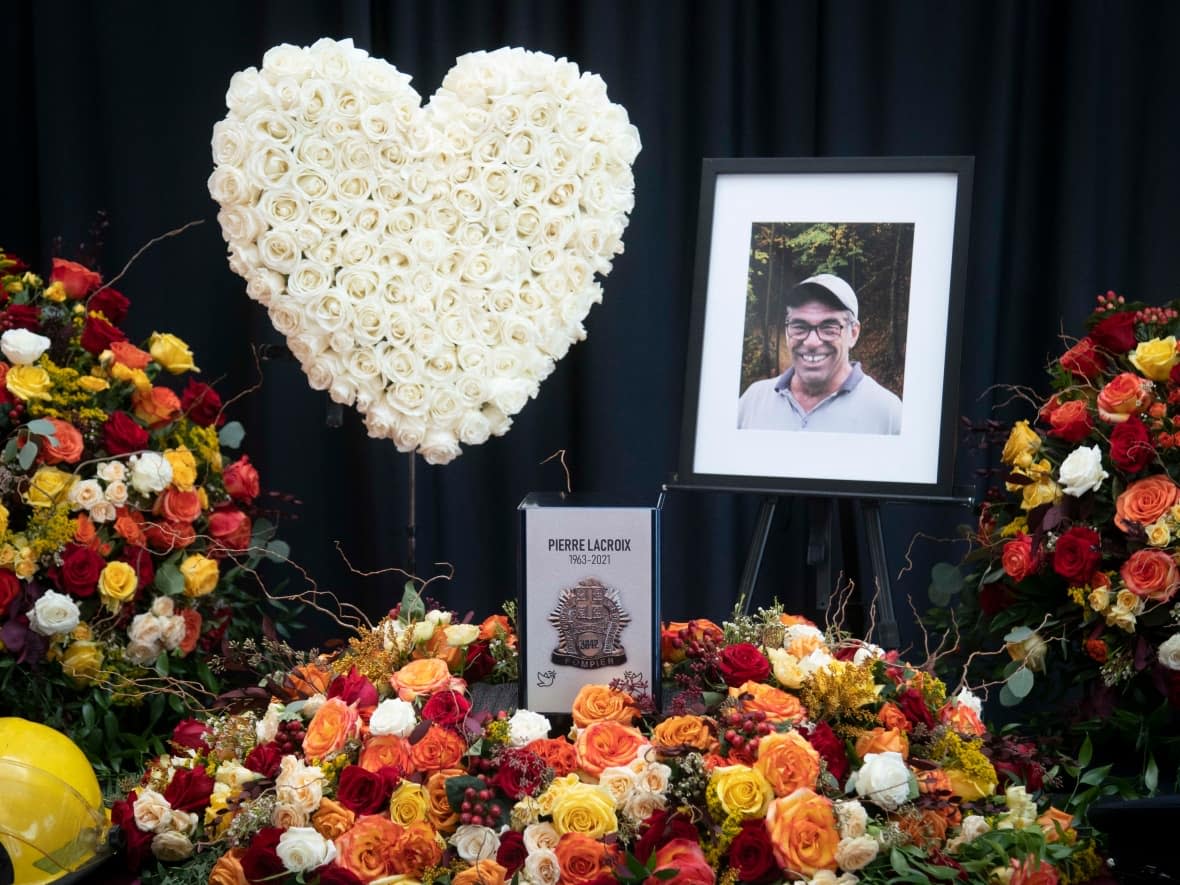Inadequate training, boat limitations caused Montreal firefighter death during rescue mission: CNESST report

A combination of factors, including the boat the Montreal fire department deployed for rescues, led to a firefighter drowning, according to a report by Quebec's workplace health and safety board, the CNESST.
On Thursday, the Commission des normes de l'équité de la santé et de la sécurité du travail (CNESST) presented findings from its investigation into the death of Montreal firefighter Pierre Lacroix.
Lacroix died on Oct. 17, 2021 when the HammerHead rescue boat he and three colleagues were in capsized in the Lachine Rapids. His body was recovered from beneath the vessel the following day.
The Montreal fire department (SIM) pulled the HammerHead boat out of service last week.
The SIM started using the HammerHead — a rigid hull boat equipped with a turbine engine — as a rescue boat in 2007. Manufactured by Rosborough Boats, in Halifax, the boat has only one fuel engine.
SIM director Richard Liebmann ordered the immediate removal of three boats from the department's fleet following new information from a Radio-Canada investigation, said Gonzalo Nunez, a spokesperson for the city of Montreal.
Chris Ross, the president of the Montreal Firefighters Association, the firefighters' union, later told members that the SIM had removed all HammerHeads boats from service.
The union sent out a statement late Thursday criticizing the CNESST report for not producing "any firm recommendations on the corrections to be made."
Unless there are changes to the process of water rescues, "nothing is likely to change in terms of safety of our members in the short term," said Richard Lafortune, vice-president of the association. He said the union had "loudly and repeatedly called for the removal" of the HammerHead boats, including immediately after Lacroix's death.
Reasons for the accident
The combination of the firefighters' uneven weight distribution in the vessel, the boat's positioning in the hollow of a wave and water suddenly swamping the boat all contributed to the vessel capsizing, said CNESST inspectors Éric Dupont and Danny Lapointe.
As well, firefighters crossed parts of the rapids that were off-limits, which overwhelmed their boat. They had been barred from that area since a boat capsized there in 2010, Dupont said.
Investigators say firefighters' lack of information about the area and inadequate training on the risks associated with intervention in the water made crew members prone to drowning.
When the HammerHead reverses, the turbine engine loses about 40 per cent of its power, making it unsuitable for towing, Dupont said.
"The HammerHead was not certified to go to that area," he said.
Although Transport Canada certified HammerHeads, the government agency doesn't require testing the boat's stability in real-life rescue conditions.
He suspects that water bubbles entered the engine, causing it to lose power instantly.
Following the accident, the CNESST prohibited the Montreal fire department from crossing unmarked areas of the Lachine Rapids, until measures to ensure safe navigation are put in place.
Since then, the employer has been working on the implementation of preventative measures.


